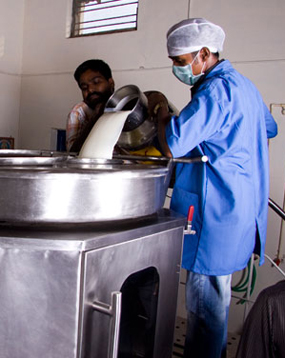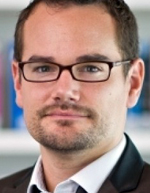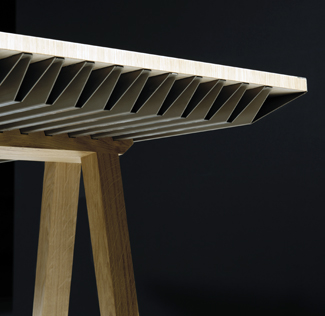 The Phase Change Matters e-mail newsletter is a weekly summary of the latest news and research on phase change materials and thermal energy storage. To subscribe, visit www.puretemp.com/subscribe. For more frequent updates, follow @puretemp on Twitter or visit the Phase Change Matters blog, www.puretemp.com/pcmatters.
The Phase Change Matters e-mail newsletter is a weekly summary of the latest news and research on phase change materials and thermal energy storage. To subscribe, visit www.puretemp.com/subscribe. For more frequent updates, follow @puretemp on Twitter or visit the Phase Change Matters blog, www.puretemp.com/pcmatters.
PHASE CHANGE MATERIALS
Promethean to distribute milk chiller in Bangladesh, Pakistan and Sri Lanka
 Promethean Power Systems, which makes a milk chiller recently introduced in rural parts of India, is planning to expand distribution to Bangladesh, Pakistan and Sri Lanka over the next few months. Co-founder Sam White said his company hopes to have 500 units in the field by the end of the year.
Promethean Power Systems, which makes a milk chiller recently introduced in rural parts of India, is planning to expand distribution to Bangladesh, Pakistan and Sri Lanka over the next few months. Co-founder Sam White said his company hopes to have 500 units in the field by the end of the year.
Thanks to a thermal battery filled with phase change material, the chiller needs only intermittent electricity to quickly chill raw milk to a temperature that arrests bacterial growth. That’s a potential game-changer for developing countries, where many dairy farmers don’t have access to reliable electricity.
Boston-based Promethean manufactures the device, and the PCM, in Pune, India. White declined to identify the composition of the PCM, but a U.S. patent application for the device describes a salt hydrate with a melting point of -2º Celsius and a latent heat of fusion of 290 J/g. A nucleating agent is added to reduce the effect of supercooling.
AWARDS
TES startup NETenergy wins $100,000 Pritzker Foundation Prize
Chicago startup NETenergy, an energy storage and management services provider, is among the winners at the 2015 Clean Energy Challenge. NETenergy was awarded the $100,000 Pritzker Foundation Prize.
The company’s thermal energy storage units use phase change composites to store cold energy, allowing customers to shift A/C production to off-peak hours, when electricity is cheaper. The units are paired with software that manages energy use. NETenergy is led by Said Al-Hallaj, who is CEO of AllCell Technologies and an adjunct professor at the University of Illinois Chicago, and Mike Pintar, an MBA candidate at the university’s Booth School of Business.
THERMAL ENERGY STORAGE
Utilities can maintain profits while reducing energy use, Economist says
The Economist lists ice-based energy storage among the technologies that can slash consumption of electricity without dampening economic growth.
“Storing off-peak energy as ice is particularly useful for air-cooling systems, one of the industrialised world’s biggest energy hogs,” the Economist notes. “Air conditioning in commercial buildings accounts for about 5% of America’s electricity use. But in some parts of the country, on a hot day, the figure can reach 30%. Cooling systems from Calmac, a firm that used to make furnaces, store energy by cooling water mixed with antifreeze when power is cheap, and release it when it is needed, rather than relying on power-hungry compressors to cool the building during peak daytime hours.”
Masdar Institute’s retooled solar concentrator uses a single tank
 In an interview with CSP Today, Dr. Nicolas Calvet, who leads the Masdar Institute‘s thermal energy storage research group, talked about the design of Masdar’s 100 kW solar platform. The experimental “beam-down” solar concentrator in Abu Dhabi is being retooled to demonstrate the feasibility of a more cost-effective and flexible TES solution.
In an interview with CSP Today, Dr. Nicolas Calvet, who leads the Masdar Institute‘s thermal energy storage research group, talked about the design of Masdar’s 100 kW solar platform. The experimental “beam-down” solar concentrator in Abu Dhabi is being retooled to demonstrate the feasibility of a more cost-effective and flexible TES solution.
The new design, which brings light into a ground-level tank, has a number of advantages.
“You don’t pump the molten salts up the tower,” he noted. “You don’t need pump, pipes, you don’t need electrical tracing to avoid the freezing in the pipes. You reduce a lot parasitic energy consumption by not moving molten salt in pipes. And you have direct absorption between the concentrated light and the salt in the tank.
“Instead of two tanks there’s only one tank. There is a moving divider plate inside it separating the upper part which should be hot and the lower part which should be cold. When you charge your system, this plate is moving down and you have only hot salts. And when you discharge, the plate is moving up and you have only cold salts.”
MARKET RESEARCH
PCMs projected to lead growth in thermal interface materials market
The global market for thermal interface materials – which includes tapes, adhesives, greases and phase change materials – is projected to grow from $1.7 billion in 2015 to $3.7 billion in 2025, according to IDTechEx Research. The new report, “Thermal Interface Materials 2015-2025: Status, Opportunities, Market Forecasts,” attributes much of the growth to elastomeric pads, solders and PCMs.
CONTINUING EDUCATION
Calorimetry workshop set for Lyon, France, June 21-26
The Research Institute for Catalysis and Environment in Lyon, France, is offering a five-day workshop on differential scanning calorimetry and other techniques related to the characterization of phase change materials, catalysts, polymers and other compounds. Sessions will be organized to match the interests of participants. Sessions will be conducted in French and English. Participants are asked to submit a brief summary of their work to be considered for presentation during the workshop.
PRODUCT DESIGN
PCM-powered table is featured in Milan Design Week showcase
 Phase change material is on display at Milan Design Week. But you’d have to look carefully to find it. A table designed by Jean-Sébastien Lagrange and Raphaël Ménard contains PCMs within triangular folds of anodized aluminum. The design blog Inhabit lists the table among its favorite green furnishings at the Designerblock showcase.
Phase change material is on display at Milan Design Week. But you’d have to look carefully to find it. A table designed by Jean-Sébastien Lagrange and Raphaël Ménard contains PCMs within triangular folds of anodized aluminum. The design blog Inhabit lists the table among its favorite green furnishings at the Designerblock showcase.
The prototype is designed to reduce energy costs buy absorbing heat when temperatures rise above a comfortable level and releasing heat when temperatures fall below that level. No details are available on the PCM type, containment method, melting point or possible plans to take the table to market.
JOB OPPORTUNITIES
New director sought for National Renewable Energy Laboratory
The Alliance for Sustainable Energy is seeking candidates for the position of director of the National Renewable Energy Laboratory in Golden, Colo. The current director, Dr. Dan Arvizu, is retiring this fall.
Alliance, which manages NREL for the U.S. Department of Energy, is seeking candidates who have “a demonstrated record of inspiring and guiding a research organization toward a compelling vision for impact, proven skill in leading innovation in science and engineering, a track record for delivering high-quality research results that are relevant and impactful, and experience in guiding operational excellence that enables mission accomplishment while meeting contractual requirements.”
Post-doctoral research on macroscopic physical modeling, TES
CIC Energigune, an energy research center in Spain’s Basque Country, has openings for two post-doctoral researchers in its thermal energy storage group. The group is working to identify innovative heat storage solutions through the development of new materials and designs. According to the job posting:
“The detailed analysis of the interstitial flow of different fluids (air, CO2, molten salt etc.) through the packed bed of different solid materials (Steel slag, concrete, Zirconia, Alumina etc.) will represent the core activities of the research. … In addition, the research could also be completed with the modeling of alternative thermal energy storage concepts based on different heat storage methodologies such as latent heat storage using phase change materials or sensible heat storage by means of fluidized bed solutions.”
RESEARCH ROUNDUP
For our full list of recent academic research, see puretemp.com/academic. Here are highlights from the past week:
From Precision Engineering:
• PCM-shielding of precision measuring equipment by means of latent heat
From Textiles Research Journal:
• Synthesis of poly(methyl methacrylate-co-acrylic acid)/n-eicosane microcapsules for thermal comfort in textiles
From Applied Thermal Engineering:
• Heat transfer analysis of underground thermal energy storage in shallow trenches filled with encapsulated phase change materials
From International Journal of Molecular Sciences:
• Development of Carbon Nanotube Modified Cement Paste with Microencapsulated Phase-Change Material for Structural–Functional Integrated Application
From Applied Mechanics and Materials:
• Phase Change Materials: A Prospective Solution for Surface Layers of Building Envelopes
From Advanced Materials Research:
• Application of Phase Change Materials in Buildings
From Procedia Engineering:
• PCMs Heat Transfer Performance Enhancement with Expanded Graphite and its Thermal Stability
• Modeling and Experiments of Energy Storage in a Fluidized Bed with PCM
From International Journal of Life Cycle Assessment:
• Life cycle assessment of two biologically produced phase change materials and their related products
From Current Sustainable/Renewable Energy Reports:
• DHFMA Method for Dynamic Thermal Property Measurement of PCM-integrated Building Materials
From Applied Energy:
• Experimental observations on the heat transfer enhancement caused by natural convection during melting of solid–liquid phase change materials (PCMs)
NETWORKING
Connect with PCM experts and industry leaders on LinkedIn
More than 135 of your colleagues have joined a new LinkedIn group devoted to the discussion of phase change material and thermal energy storage. The Phase Change Matters group is intended to be a highly interactive complement to the blog and newsletter of the same name.
You are invited to join the group and connect with PCM and TES experts from around the world. The hot topic this week: What are the main barriers to wider adoption of phase change material in thermal energy storage systems used to cool buildings? Dr. Niraj Poudel, a building design engineer based in New York, writes:
“Cost of PCMs (especially the micro encapsulated PCMs) in general seems to be a significant barrier in adoption. The additional cost of mixing them into smart panels as advertised here in the U.S. Increases the payback period significantly. Even in climate zones where they would work best is where they fail, is in major part due to cost.”
Followup research on such projects appears to be sparse. And yet phase change material continues to be integrated into major projects such as Federal Center South in Seattle. The early reports there have been encouraging (gsa.gov/portal/content/187331). Are there any other recent projects of this type, successful or not?
YOUR TURN
Got a question about PCMs or TES? Ask our experts
Two Entropy Solutions advisors, Dr. Mohammed Farid of the University of Auckland and Lucas B. Hyman of Goss Engineering, are ready to answer your questions about phase change material and thermal energy storage. We’ll select the best questions sent to inquiries@entropysolutionsinc.com and post the answers here each Friday.